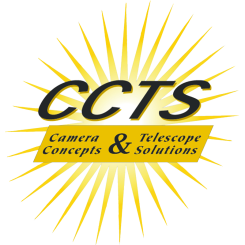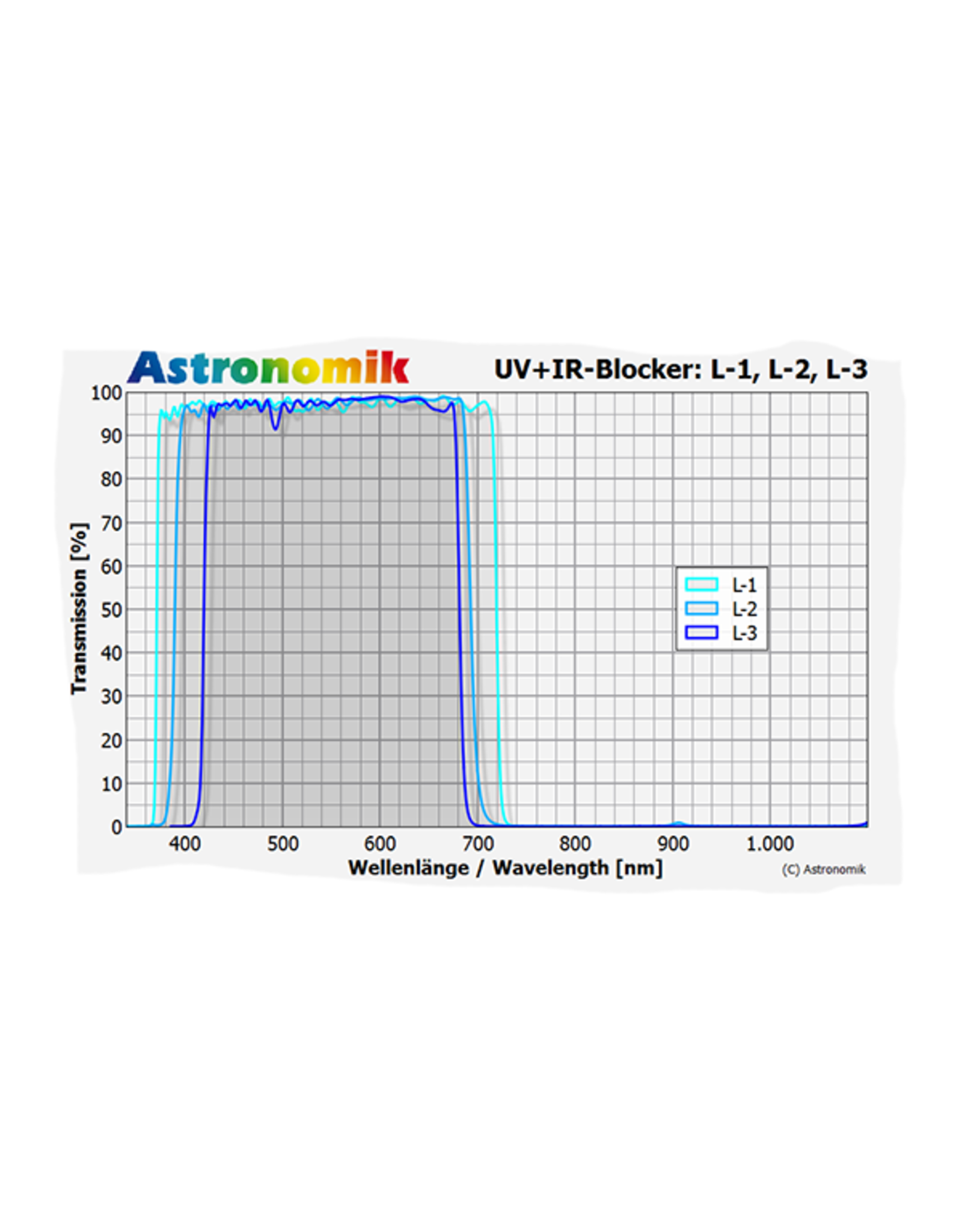Astronomik L-1 UV-IR Blocking EOS XL Full Frame Clip Filter
| Article number: | L1-EOSXL |
| Availability: | More on the Way to us |
In order to produce spectacular final image results, the Luminance channel is likely the most critical factor. The filter being used must allow for as much signal as possible to be gained. For this, the filter needs to have a wide spectral bandpass for the highest possible transmission. This combination enables maximum sensitivity and gives you the highest photon counts on your pixels. Although the high transmission level is a nice benefit of these new Luminance filters, perfect color correction is not universal on all optical instruments, or on supplemental optical elements such as correctors, reducers, and flatteners. As a result, a Luminance filter with a wider spectral bandpass can be an issue. A band pass with excess width allows for light not completely focused to be transmitted (chromatic aberration), for stars that appear soft or bloated. Image processing can be difficult in such cases. Therefore, having a spectral window that is slightly more narrow can lessen or completely nullify this adverse effect.
Astronomik has recently expanded their Luminance filter line to provide you with all the tools needed to gather the best possible data. Now you can select the Luminance filter best equipped for your specific telescope system to get the highest signal with the most clear image for Luminance channel.
Your telescope's color correction will determine whether you should use a filter with a wider spectral window for the Luminance channel. The L1 features the widest spectral window, while the L3 has the narrowest. The L2 is roughly the same as the current Astronomik L-Filter.
For optical systems that are totally free of chromatic aberration, the L1 filter is the best option. When working with most optical systems using a correcto, flattener, or reducer in the optical train for common use, the L2 is your choice. Lastly, for users with refractors that feature less than perfect color correction, the L3 filter works best. Also, the L3 can combine with Astronomik's new Deep-Sky RGB filters to lessen the bluish halo effect around stars.
The transmission curve characteristics and coatings on the new Luminance filters have been designed and engineered in such a way that no halos or reflections will be visible. Even with bright stars in the field of view you will be able to reveal the faintest structures in galaxies or nebulae.
Like all Astronomik Filters, the new Luminance filters are made using an extremely durable and scratch resistant coating, deposited on the finest polished optical substrate, which is free of any striae or internal strains. All substrates are made to exactly the same thickness, so all Astronomik filters are parfocal.
- Parfocal with any filter available from Astronomik
- Fully resistant to scratching as well as the effects of aging and high humidity
- Diffraction limited, this filter maintains the current optical performance level of your telescope
- Astronomik filters come with a long-lasting, supreme quality plastic filter box
- Made in Germany, a country known for producing optics of high quality
- Compatible with Canon full frame 5D MK II, 5D MK III, and 6D DSLR cameras
- Please note that Astronomik XL Clip filters will not work with the Canon 6D Mk II, 5DS, 5DSR, and the 5D Mk IV camera bodies, and will only work without LiveView with the Canon 5D Mk I
Astronomik's proprietary Clip-Filter system is made of black anodized aluminum and laser-cut on the most up-to-date machinery. EOS XL full frame clip filters are designed to work with Canon DSLR cameras with full format bodies such as the 5D Mk II and 5D Mk III. This Clip-Filter can be inserted into the Canon EOS camera body using only your fingers in a matter of seconds. Removal is also quick and easy. No tools or adjustments needed and all lens operations like focus, screen, and image stabilization, continue to function normally! In addition, during long exposures, Astronomik's Clip-Filter system keeps dust at bay so it doesn't gather on your sensor. Unfortunately this filter is not compatible with the Canon EOS 6D Mk II.




